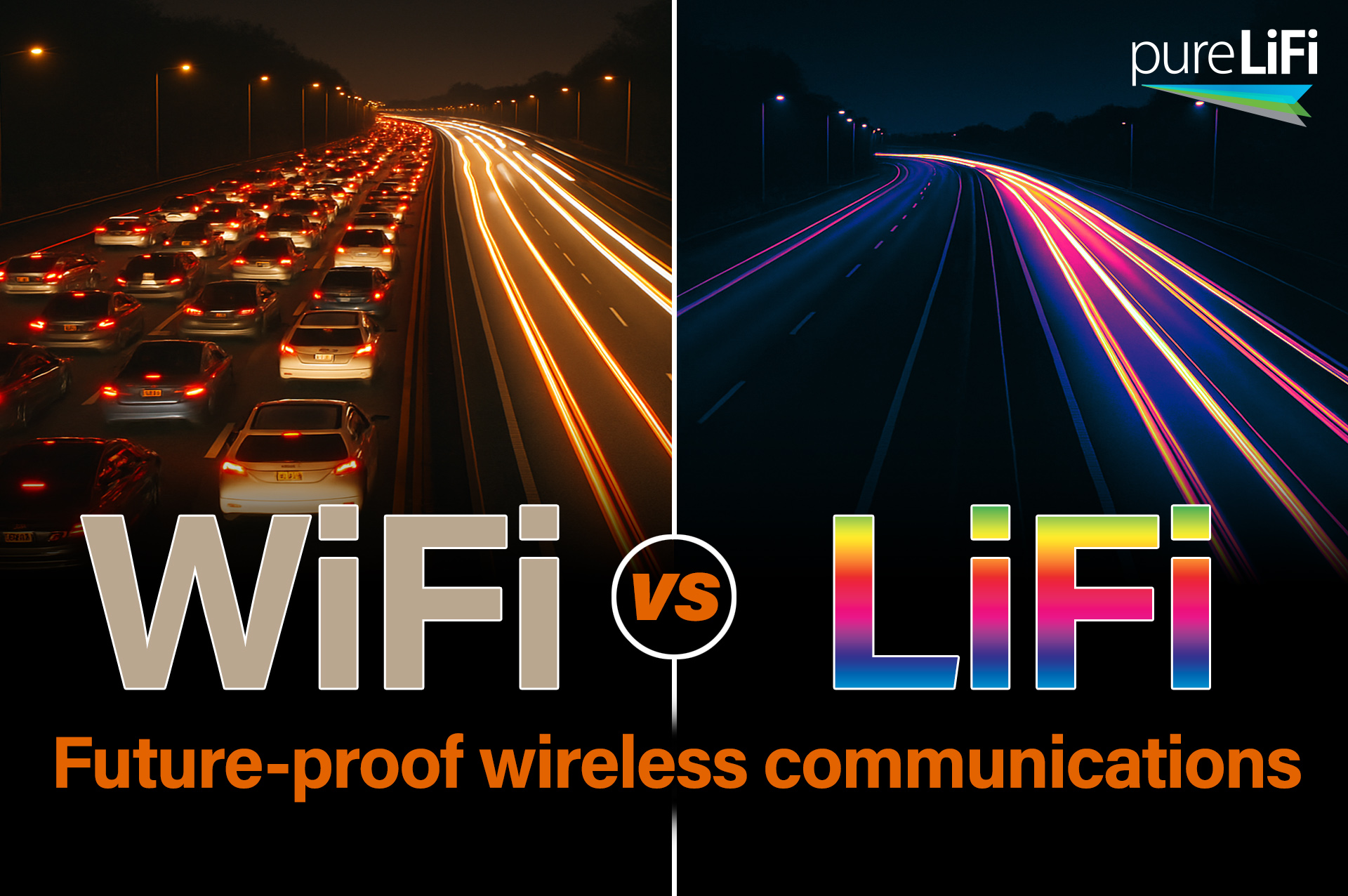Products
Published
6 June 2025
Written by Luke Forster
At Mobile World Congress 2025, Professor Harald Haas—often referred to as the father of LiFi—shared his vision for the future of wireless communication with ipXchange. And it doesn’t include more radio frequency. Instead, it involves something all engineers already know: light.
Why LiFi, and Why Now?
Radio spectrum is crowded, expensive, and increasingly limited in its ability to deliver the performance future applications demand. That’s where LiFi wireless communication comes in. LiFi doesn’t rely on RF waves—it uses light waves, such as those from an ordinary LED bulb, to transmit high-speed data.
According to Haas, light-based communication unlocks an optical spectrum 3,000 times wider than the radio spectrum. That’s a massive, largely untapped resource.
From Fibre to Free Photons
Most of us already use light for data—fibre optics carry the internet beneath our oceans. But those photons are guided through cables. Haas argues it’s time to “liberate the photon”—take it out of the fibre and let it roam.
This shift allows transmitters and receivers to move freely, just like RF, but with the added benefit of ultra-high bandwidth. In controlled indoor environments, this could deliver speeds in the tens—or even hundreds—of gigabits per second.
Built-In Security and Interference Control
One of LiFi’s unique advantages is inherent physical security. Light can’t penetrate walls, which means transmissions are naturally confined to a room. That prevents unwanted interception and eliminates cross-room interference—something Wi-Fi still struggles with.
As a result, you can deploy the same LiFi system in multiple adjacent rooms without causing congestion or dropouts.
Use Cases That Demand Light
So where will LiFi shine? Haas pointed to several killer apps:
- AR/VR headsets, where latency and weight are critical
- Holographic displays, which require tens of Gbps
- Hospitals, manufacturing, and smart cities, where RF isn’t ideal
And as processing moves to edge nodes or light sources themselves, thin clients—like smart glasses—can rely on light for fast uplinks and downlinks.
How to Get Started
For engineers interested in evaluating LiFi today, companies like pureLiFi already offer commercial modules and development kits. While the learning curve might look steep, Haas emphasises that most engineers already understand photonics fundamentals—it’s more familiar than it seems.
Light isn’t just for sensing and communication anymore. If Haas is right, LiFi wireless communication will be the backbone of future computing, networking, and even real-time control systems. There’s no way around it: the future is photonic.
Comments are closed.

Comments
No comments yet